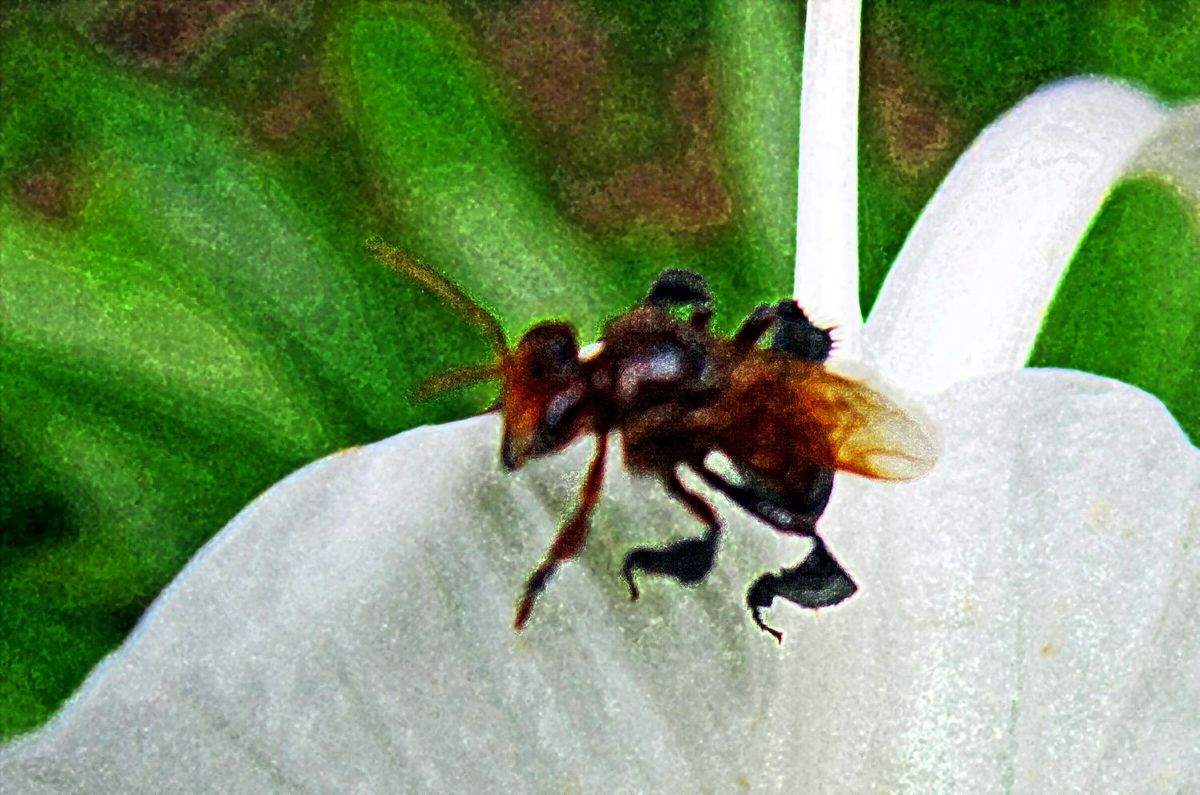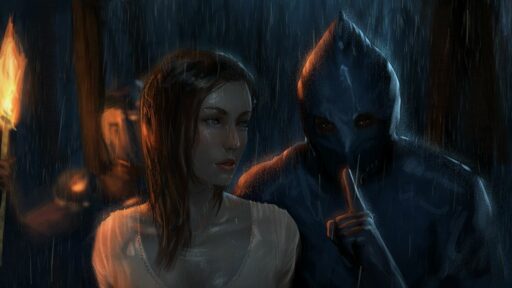When ‘The Bee Movie’ buzzed into theaters, it sparked a swarm of insect-themed animations and a hive of imitators, each trying to capture a slice of the honey-sweet success. This article delves into the legacy, dissection, and cultural impact of ‘The Bee Movie’, as well as the artistry and behind-the-scenes efforts that made it an animated icon. We’ll explore the world of mockbusters such as ‘Plan Bee’ and ‘Bug Bites: An Ant’s Life’, and weigh their artistic merit against the original.
Key Takeaways
- ‘The Bee Movie’ inspired a genre of insect-themed animations and several mockbusters, notably ‘Plan Bee’ and ‘Bug Bites: An Ant’s Life’, which failed to match the original’s charm.
- Mockbusters like ‘Plan Bee’ suffer from deeply unsettling animation and inconsistent tone, often missing the mark on humor and quality.
- Despite the higher standard of voice work in some imitations, the overall artistic merit of direct-to-DVD releases often falls short due to limited animation techniques and weak storytelling.
- The cultural impact of ‘The Bee Movie’ extends beyond entertainment, influencing modern animators and contributing to the popularity of bee-related content through parody and satire.
- The making of ‘The Bee Movie’ was both challenging and rewarding, reflecting the dedication and creativity that goes into successful animation careers and setting a benchmark for future animators.
The Legacy of ‘The Bee Movie’: Influence and Imitation

The Rise of Insect-Themed Animations
Following the buzz created by ‘The Bee Movie’, the animation industry saw a swarm of insect-themed movies attempting to capitalize on its success. The market quickly became saturated with a variety of bug-based stories, each vying for the attention of audiences hungry for more animated adventures.
- ‘Plan Bee’ emerged as a direct response, featuring a hive of characters in a quest to serve their queen. Despite its efforts, the film is often remembered for its less-than-stellar execution.
- The confusion of ‘Bug Bites: An Ant’s Life’ is notable, with its plot lost amidst endless chase scenes, leaving viewers questioning the entertainment value of such a pursuit.
The trend of insect animations can be seen as a reflection of the industry’s desire to replicate the success of ‘The Bee Movie’, often at the cost of originality and quality.
While some of these films managed to create a buzz of their own, many fell short, unable to capture the charm and wit that made ‘The Bee Movie’ a cultural phenomenon.
Notable Mockbusters and Their Impact
The phenomenon of mockbusters has led to a slew of films that draw heavily from major animated successes, often with questionable results. ‘Homeward’ stands as a prime example, a film that attempted to capitalize on the concept of ‘Onward’ but fell short in execution, particularly in its character design and narrative coherence.
Another notorious title is ‘What’s Up’, which took the whimsical idea of a flying house from Pixar’s ‘Up’ and inexplicably mixed in elements of magic, resulting in a film that is both baffling and, at times, uncomfortably offensive.
The market for animated mockbusters is not just about imitation, but also about the reinterpretation of themes and narratives, sometimes pushing the boundaries of taste and originality.
These films often serve as a testament to the enduring appeal of their inspirations, yet they also highlight the challenges of creating quality content without the resources of major studios. Below is a list of some animated films that have been labeled as mockbusters:
- ‘Ant’s Life’
- ‘Leo the Lion: King of the Jungle’
- ‘What’s Up’
- ‘Homeward’
While these titles may not achieve the acclaim or success of the films they imitate, they contribute to a curious niche in the animation industry and reflect the diverse strategies employed by smaller studios to capture audience attention.
Comparing ‘The Bee Movie’ with Its Imitators
In the wake of ‘The Bee Movie’s’ success, a swarm of imitators buzzed into the market, each attempting to capture a slice of the animated insect pie. ‘Plan Bee’ and its kin may mimic the structure and themes of their predecessor, but they fall short in execution. The animation quality often feels rushed and the voice acting lacks the charm and wit found in the original. The result is a series of films that are more likely to induce cringes than smiles.
- ‘Plan Bee’ features a group of bugs in a plot that is both confusing and unsettling.
- The tone of these imitators swings wildly, failing to deliver the dark humor intended for adults.
- Female characters and plot elements are borrowed heavily from ‘A Bug’s Life’, diluting originality.
While these films may share a thematic lineage with ‘The Bee Movie’, they serve as a stark reminder that not all animations are created equal. The gap in quality is not just a matter of budget, but of creativity and attention to detail.
Comparisons between ‘The Bee Movie’ and its imitators reveal a chasm in artistic achievement. Where ‘The Bee Movie’ offered a coherent narrative and engaging characters, its imitators often present disjointed stories and forgettable characters. The original film’s legacy is not merely in its humor or animation, but in its ability to resonate with audiences of all ages—a feat its imitators have yet to accomplish.
Dissecting the Mockbuster Phenomenon

Defining the Mockbuster Genre
The term ‘mockbuster’ refers to a low-budget film that capitalizes on the publicity of a major movie release by imitating its themes, characters, or title. These films often aim to confuse consumers into purchasing or viewing them over their more prestigious counterparts. Mockbusters are typically released directly to DVD or streaming platforms, and they are known for their rushed production schedules and lower production values.
- Characteristics of Mockbusters:
- Imitative titles and cover art
- Lower budget and production quality
- Release timing close to the original film
- Limited theatrical release, if any
The mockbuster genre thrives on the fringes of the film industry, often seen as a parasitic form of entertainment that seeks to benefit from the marketing efforts of major studios without the same level of artistic investment.
Despite their notoriety, mockbusters have carved out a niche in the market, sometimes achieving cult status among certain audiences. They serve as a testament to the idea that even the most dubious forms of creativity can find a place in the cultural landscape. ‘Bee Movie’ explores the unexpected cultural phenomenon through its origins, internet resurgence, impact, and critical reevaluation, showcasing its enduring legacy and potential for future adaptations.
Case Study: ‘Plan Bee’ and Its Unsettling Execution
Following the buzz of ‘The Bee Movie’, the mockbuster ‘Plan Bee’ emerged, attempting to capitalize on the insect animation trend. The execution of ‘Plan Bee’, however, is widely regarded as unsettling, with its 3D animation that appears barely finished and voice acting that ranges from mediocre to grating. The film’s attempt at dark humor falls flat, with jokes too immature to appeal to adults, yet it fails to reach the ‘so bad it’s good’ category.
The tone of ‘Plan Bee’ is its most inconsistent aspect, with an intended family-friendly vibe overshadowed by its lackluster humor and quality.
Critics and viewers alike have noted the film’s numerous shortcomings:
- The animation quality is subpar, with characters that move in a deeply unsettling manner.
- Voice acting and sound quality contribute to the film’s jarring experience.
- The plot, involving a caterpillar and ants surviving a gecko incursion, is often obscured by excessive chase scenes.
Despite its intentions, ‘Plan Bee’ serves as a stark contrast to ‘The Bee Movie’, highlighting the challenges of creating a successful imitation.
The Confusion of ‘Bug Bites: An Ant’s Life’
The 1998 release of ‘Bug Bites: An Ant’s Life’ left audiences bewildered with its chaotic plot and subpar animation. The film, which ostensibly follows a caterpillar and ants during a gecko invasion, loses its narrative thread amidst excessive chase sequences. Critics and viewers alike have panned the movie for its unfinished 3D animation, poor voice acting, and grating sound quality.
The intention to entertain through relentless action backfired, resulting in a film that feels aimless and drawn-out.
Despite the creators’ efforts, the movie’s execution did not resonate with its audience, leading to its status as a notorious example of a failed imitation. The table below summarizes the key criticisms of ‘Bug Bites: An Ant’s Life’:
| Aspect | Critique |
|---|---|
| Animation Quality | Barely finished, unpolished |
| Voice Acting | Awful, detracts from experience |
| Sound Quality | Irritating, inconsistent |
| Plot | Confusing, too many chase scenes |
In the wake of ‘The Bee Movie’, the industry saw a surge in insect-themed animations, but few managed to capture the charm or quality of their inspirations. ‘Bug Bites: An Ant’s Life’ stands as a stark reminder that not all imitations can achieve the balance between education and entertainment that movies like ‘The Secret Life of Bees’ and ‘Malcolm X’ have accomplished.
Analyzing the Artistic Merit of Imitations

Animation Quality in Direct-to-DVD Releases
The direct-to-DVD market for animated films often presents a stark contrast in animation quality compared to their big-screen counterparts. Without the same budget or production timelines, these releases frequently exhibit a drop in the sophistication of animation techniques. For instance, characters may appear dragged along rather than moving naturally, which can inadvertently lend a more sinister tone to what are meant to be children’s films.
Despite the challenges, some direct-to-DVD titles manage to deliver a commendable level of quality. A notable example is the use of 3-D animation and 2-D painting to enhance visual effects, even when resources are limited. However, the constraints of lower budgets often mean that the animation lacks the fluidity and detail of higher-end productions.
The disparity in animation quality between major studio releases and direct-to-DVD imitations is not just a matter of aesthetics; it reflects the broader challenges faced by animators working with limited resources.
The table below provides a comparison of animation techniques used in direct-to-DVD releases versus mainstream animated films:
| Technique | Direct-to-DVD | Mainstream Animation |
|---|---|---|
| 3-D Modeling | Often basic | Highly detailed |
| 2-D Painting | Used for fixes | Integral to scenes |
| Character Rigging | Simplistic | Complex |
| Scene Transformation | Minimal | Extensive |
While some direct-to-DVD animations like "Tappy Toes" attempt to compensate for visual shortcomings with better voice acting, they often fall short of replicating the charm and polish of their inspirations.
Voice Acting: The Saving Grace or Another Letdown?
In the realm of mockbusters, voice acting often becomes a pivotal factor in determining the overall quality of the production. Voice talent can either elevate a mediocre film or further expose its flaws. For instance, some direct-to-DVD releases have surprised audiences with a higher standard of voice work, providing a much-needed break from subpar animation. However, this is not always the case.
The disparity in voice acting quality is evident when comparing different mockbusters. While some manage to deliver performances that add depth to the characters, others fall into the trap of lazy voice work that involves insulting imitations or lackluster emotion.
The table below showcases a comparison of voice acting in various mockbusters, highlighting the inconsistency across productions:
| Mockbuster Title | Voice Acting Quality | Audience Reception |
|---|---|---|
| Tappy Toes | Higher Standard | Mixed |
| Plan Bee | Detestable | Negative |
| An Ant’s Life | Lazy Imitations | Negative |
Ultimately, voice acting in mockbusters is a hit-or-miss affair. It can be the element that provides a glimmer of hope in an otherwise dismal attempt at entertainment, or it can be the final nail in the coffin, solidifying the film’s status as a forgettable imitation.
When Imitation Fails to Flatter
Imitation in the world of animation often stems from a desire to capitalize on the success of a blockbuster. However, not all attempts to replicate success are well-received. The essence of what made the original work captivating is frequently lost in translation, resulting in a product that feels soulless and uninspired.
- The sound design and narrative adaptation often suffer, leading to a product that is bizarre and lacks the wholesome energy of the original.
- Directors may try various gimmicks to capture attention, but these efforts can feel forced and fail to resonate with audiences.
- Music, a core element in many animations, can become a mere tool for exposition rather than enriching the story.
The mismatch between the original’s charm and the imitation’s execution can be so stark that it borders on the absurd, leaving viewers with an experience that is more bewildering than entertaining.
The table below illustrates the stark contrast between the original and its imitations, highlighting the areas where the latter tend to fall short:
| Aspect | Original | Imitation |
|---|---|---|
| Sound Design | Engaging | Flat |
| Narrative | Endearing | Bizarre |
| Music | Enriching | Expository |
The journey from inspiration to imitation is fraught with pitfalls. When the delicate balance of elements that made the original a masterpiece is not maintained, the result is often a pale shadow that fails to flatter, let alone entertain.
The Cultural Impact of ‘The Bee Movie’

Understanding the Popularity of Bee-Related Content
The unexpected success of ‘The Bee Movie’ sparked a surge in bee-related content across various media. The film’s unique blend of humor, adventure, and a relatable protagonist made it a standout in the animation genre, leading to a proliferation of similar themes in subsequent works. The character of Barry B. Benson, with his quest for more than the life predestined for him, resonated with audiences, emphasizing the celebration of individuality and the courage to pursue one’s passions.
The market’s response to ‘The Bee Movie’ can be seen in the number of related projects that followed. Here’s a brief overview of the types of content that buzzed into popularity:
- Insect-themed animations and TV shows
- Educational materials and books about bees
- Merchandise featuring bee characters
- Video games with bee protagonists
The influence of ‘The Bee Movie’ extends beyond entertainment, touching on educational aspects and even inspiring real-world interest in beekeeping and conservation efforts.
While some imitations failed to capture the charm of the original, the trend underscores the movie’s impact on popular culture and the entertainment industry.
The Role of Parody and Satire in Animation
Parody and satire have long been staples in the world of animation, offering a unique blend of humor and critique that resonates with both children and adults. The clever use of parody in animations can subtly educate viewers on various topics while entertaining them. This dual purpose is evident in films that mimic the style and storylines of major blockbusters, often with a twist that highlights the absurdity or flaws of the original work.
In the case of ‘The Bee Movie’, its cultural impact has spawned numerous imitations, each varying in their approach to parody and satire. Some, like ‘Tappy Toes’, attempt to emulate the success of their predecessors without the same level of finesse or charm. The absence of iconic elements such as memorable dance sequences or the voice talents of celebrities like Robin Williams is keenly felt. Others, like ‘Homeward’, struggle with character design and narrative coherence, failing to capture the essence of the films they mimic.
The mockbuster genre often reveals the limits of its medium, particularly when budget constraints lead to compromised animation quality and storytelling.
Despite these shortcomings, the role of parody and satire in animation is undeniable. They serve as a commentary on the industry itself, reflecting the trends and sometimes the over-saturation of certain themes. Below is a list of some notable mockbusters and the aspects they attempt to satirize:
- ‘Tappy Toes’ – Dance and penguin craze
- ‘Homeward’ – Fantasy and brotherhood
- ‘Ant’s Life’ – Insect adventures
- ‘Leo the Lion: King of the Jungle’ – Animal kingdom hierarchy
Educational Value Versus Entertainment
The debate between educational value and entertainment in animations like ‘The Bee Movie’ is a nuanced one. The core question is whether these films should prioritize imparting knowledge or providing amusement. On one hand, animations have the potential to be powerful educational tools, offering visual and narrative methods to engage young minds with complex topics. On the other hand, the primary goal of many animations is to entertain, creating a memorable and enjoyable experience for viewers of all ages.
Animations can serve as a bridge between learning and fun, but striking the right balance is crucial. The following points highlight the dual roles these films can play:
- Introducing educational themes in an accessible manner
- Utilizing humor and storytelling to maintain engagement
- Encouraging critical thinking through plot and character development
The effectiveness of an animation in educating or entertaining can significantly influence its legacy and the way it is perceived by audiences.
Ultimately, the success of films like ‘The Bee Movie’ in blending education with entertainment can inspire future content creators to innovate within the genre, potentially leading to a richer and more diverse array of animated works.
Behind the Scenes: The Making of an Animated Icon

The Creative Process of ‘The Bee Movie’
The creative journey of ‘The Bee Movie’ was a meticulous blend of storytelling, character development, and technical innovation. The animation team worked tirelessly to bring the vibrant world of bees to life, ensuring that each frame captured the essence of the story. The process involved several key stages:
- Conceptualization and storyboarding
- Character design and development
- Voice recording and performance
- Animation and rendering
- Music composition and sound design
- Editing and final touches
The final step in the process is compositing all of the different components of the shot layer by layer to create the final shot as it will appear in the movie.
This multi-layered approach was crucial in creating a cohesive and engaging film. Pixar’s storytelling, often mentioned in the same breath, is known for its ability to blend art and technology to create immersive worlds that resonate with audiences of all ages.
Challenges and Rewards in Animation Careers
The journey of an animator is fraught with both technical challenges and creative triumphs. High-end desktop machines are essential for artists to render their intricate models and layers, reflecting the significant investment in technology required for modern animation. The rendering process itself is a behemoth task, demanding massive CPU resources to generate and light millions of polygons for each frame.
Despite these hurdles, the rewards are substantial. Animators have the opportunity to bring characters to life, from the fantastical to the historically accurate. The satisfaction of integrating a fully animated character into a scene is unparalleled, as seen in works ranging from ‘Godzilla’ to depictions of entire platoons.
The art of animation is a blend of meticulous technical skill and boundless imagination, where every frame is a canvas for storytelling.
While the process can be arduous, the end result—a piece of art that can move, inspire, and entertain—is a testament to the animator’s dedication and talent.
The Influence of ‘The Bee Movie’ on Modern Animators
The release of ‘The Bee Movie’ marked a significant moment in animation history, not only for its unique storyline but also for its technical achievements. Modern animators often cite the film as a pivotal influence, particularly in its blend of humor and a heartfelt message that resonates with both children and adults. The movie’s success spurred a wave of insect-themed animations, each trying to capture a slice of the buzz.
- The use of miniatures in iconic films evolved with CGI, blending old and new techniques to enhance realism in action movies.
- CGI revolutionized special effects, creating immersive cinematic experiences.
While ‘The Bee Movie’ did not rely heavily on miniatures, its innovative use of CGI set a new standard for subsequent films in the genre. Animators learned to push the boundaries of digital animation, creating more expressive characters and dynamic scenes.
The influence of ‘The Bee Movie’ extends beyond the screen, inspiring animators to explore new storytelling techniques and animation styles.
Despite the emergence of various imitators, none have quite matched the originality and charm of ‘The Bee Movie’. Animators continue to draw inspiration from its approach, striving to blend entertainment with a meaningful message in their own works.
Conclusion
In the vast landscape of animated films, ‘The Bee Movie’ stands out for its unique premise and the buzz it created upon release. While it inspired a swarm of imitations, none could capture the charm and wit that made the original a topic of conversation and meme culture. From the unsettling ‘Plan Bee’ to the confused plot of ‘Bug Bites: An Ant’s Life,’ these knock-offs serve as a stark reminder of the fine line between homage and a poorly executed copy. Despite the attempts to replicate the success of ‘The Bee Movie,’ it’s clear that the originality and heart of a film cannot be duplicated by mere imitation. As we reflect on these animated adventures, it’s evident that quality storytelling and genuine creativity are what truly resonate with audiences, leaving the mockbusters to buzz away into obscurity.
Frequently Asked Questions
What is ‘The Bee Movie’ and why has it become a cultural icon?
The Bee Movie is an animated film that became a cultural icon due to its unique storyline involving bees and human interactions, its memorable characters, and its underlying messages about the environment and society.
What are mockbusters and how are they related to ‘The Bee Movie’?
Mockbusters are low-budget films that capitalize on the popularity of major releases by imitating their themes or titles. ‘The Bee Movie’ inspired several mockbusters like ‘Plan Bee’ due to its success.
Can you tell me more about ‘Plan Bee’ and its reputation?
‘Plan Bee’ is a direct-to-DVD release that tried to emulate ‘The Bee Movie’ but is known for its unsettling animation and voice work, as well as a tone that fails to be entertaining for its intended audience.
What is ‘Bug Bites: An Ant’s Life’ and how does it compare to other animations?
‘Bug Bites: An Ant’s Life’ is a 1998 mockbuster with poor 3D animation and voice acting, often criticized for its confusing plot and lack of entertainment value, especially when compared to other insect-themed animations.
How do mockbusters like ‘Plan Bee’ affect the animation industry?
Mockbusters like ‘Plan Bee’ often reflect the challenges of low-budget animation, potentially harming the reputation of the industry, but they also highlight the importance of quality in storytelling and production.
What impact did ‘The Bee Movie’ have on modern animators and the industry?
‘The Bee Movie’ has influenced modern animators by showcasing the rewards and challenges of crafting unique animated stories, and it has encouraged a generation to pursue careers in animation.






